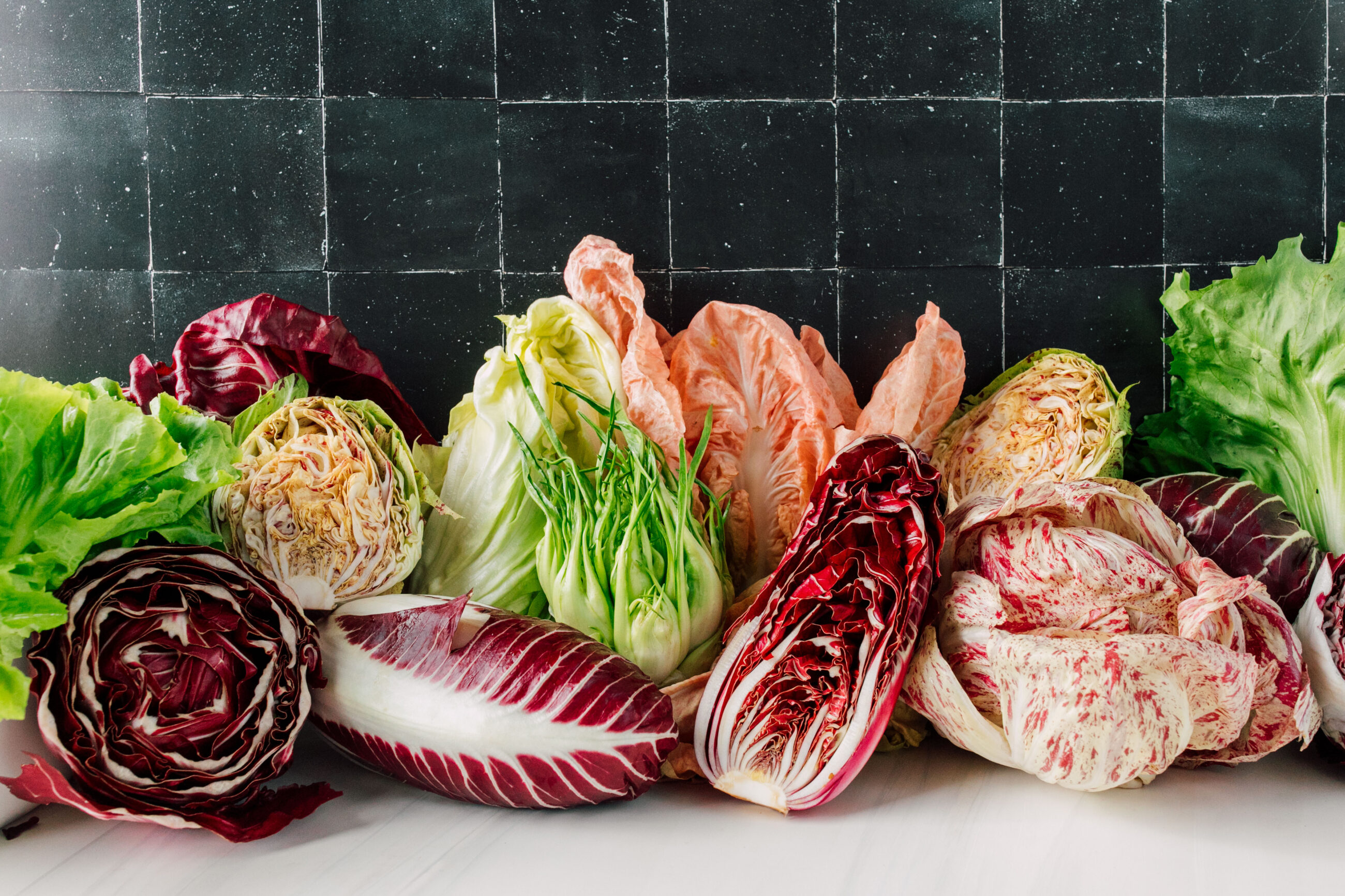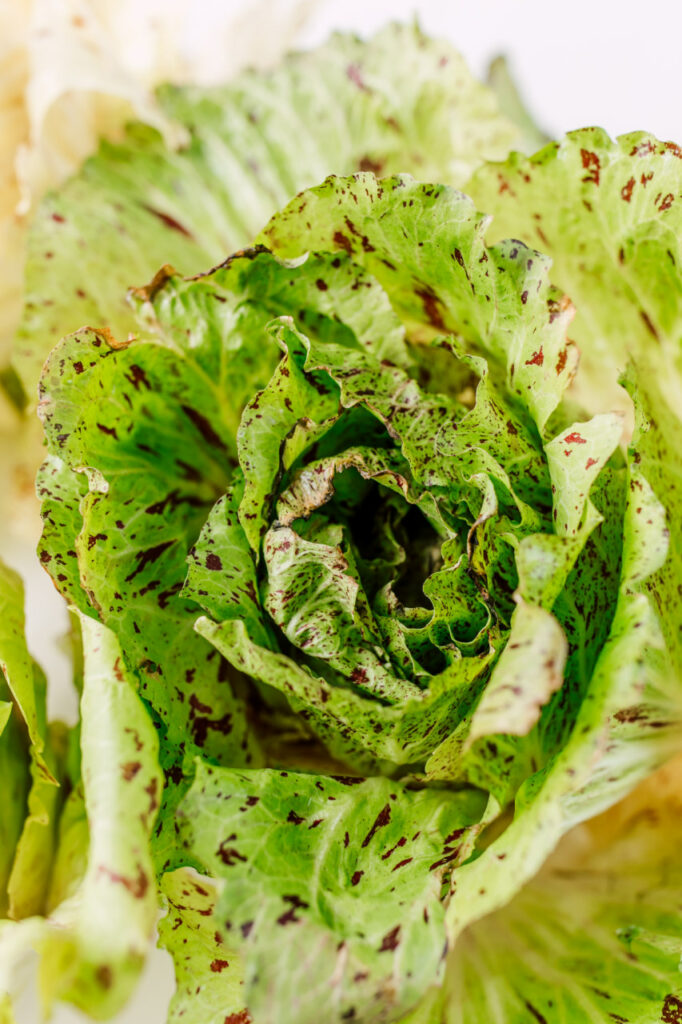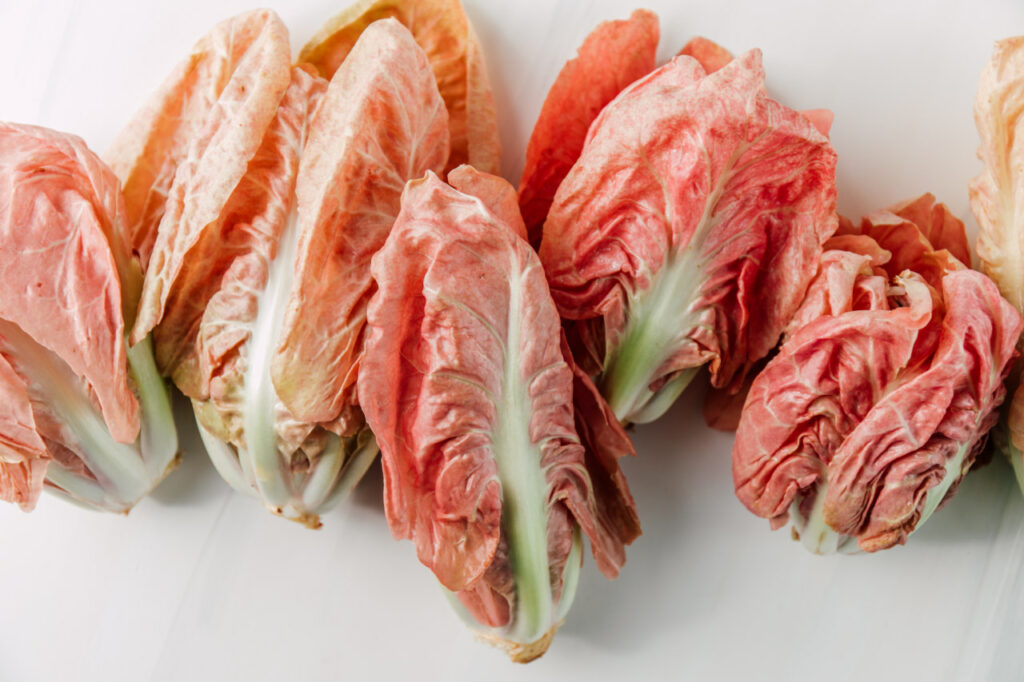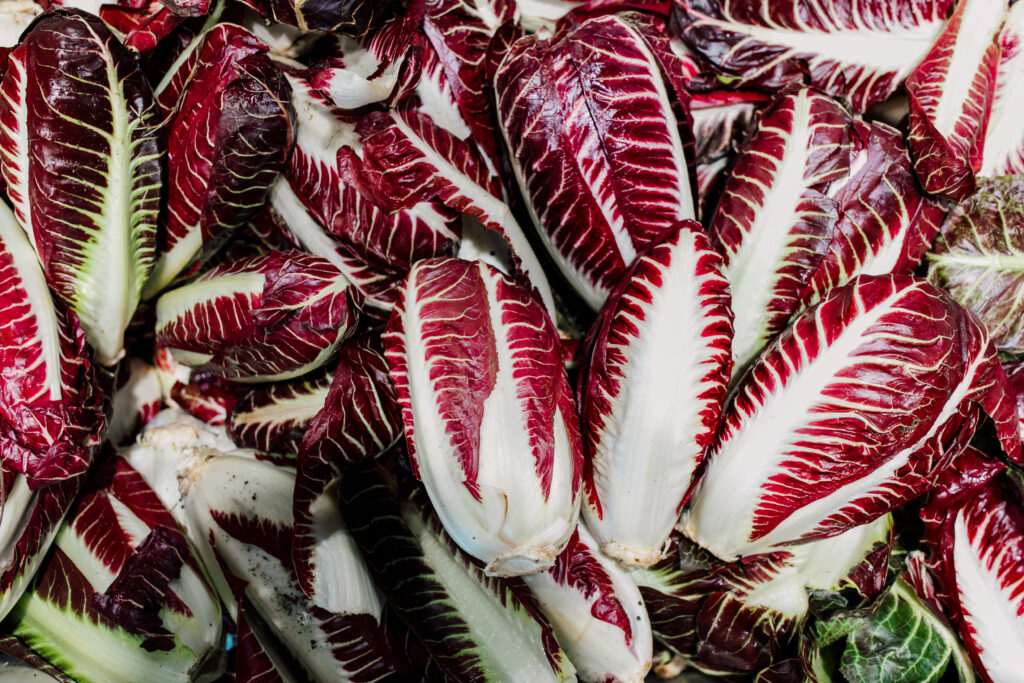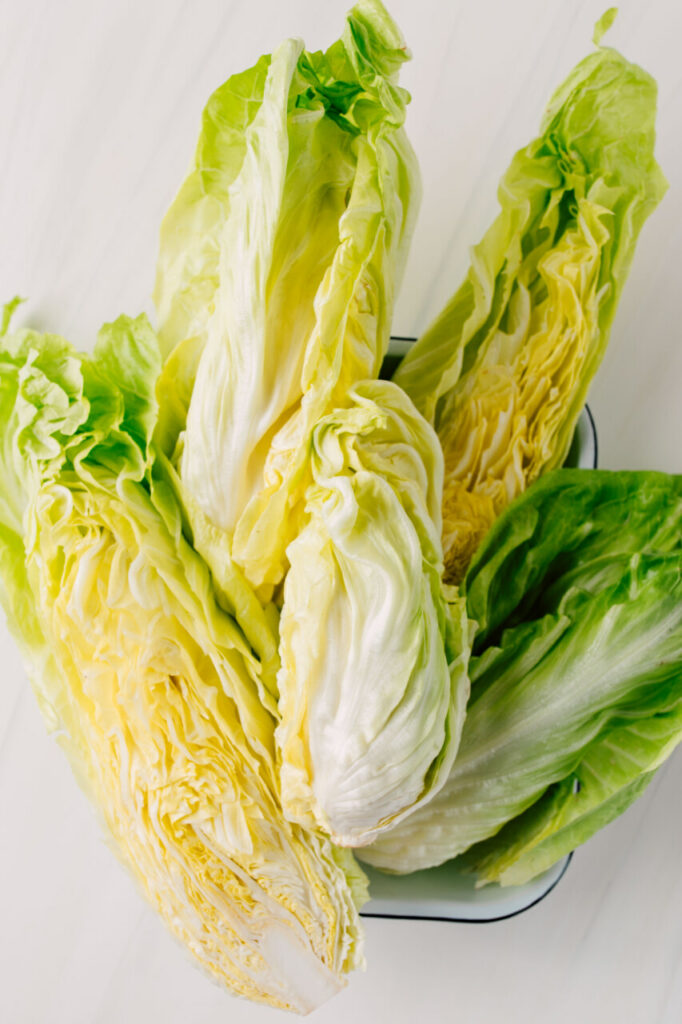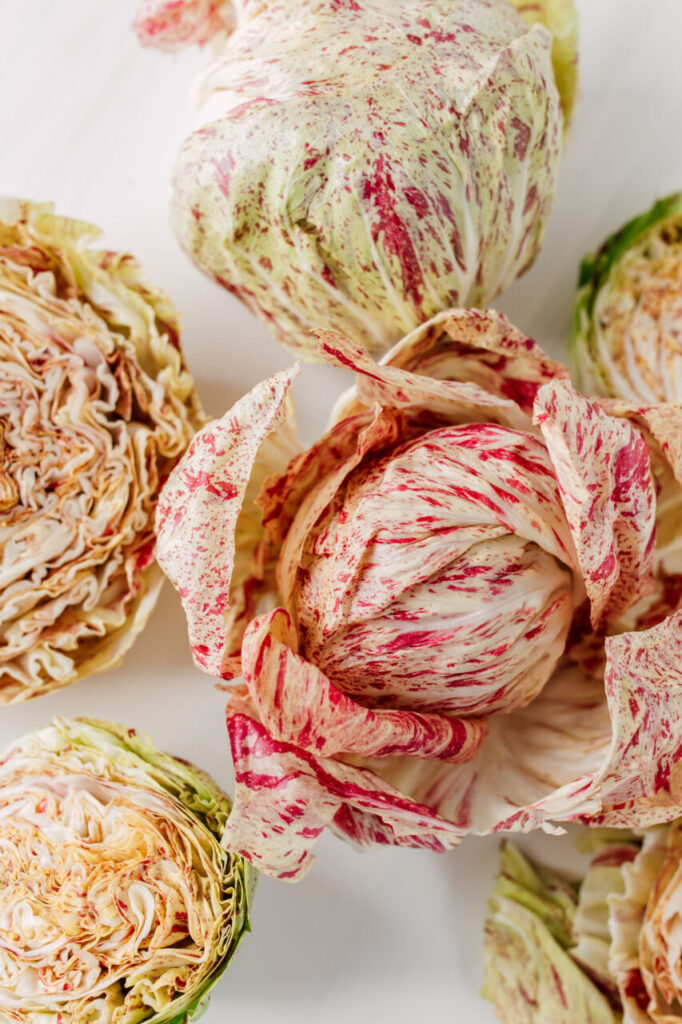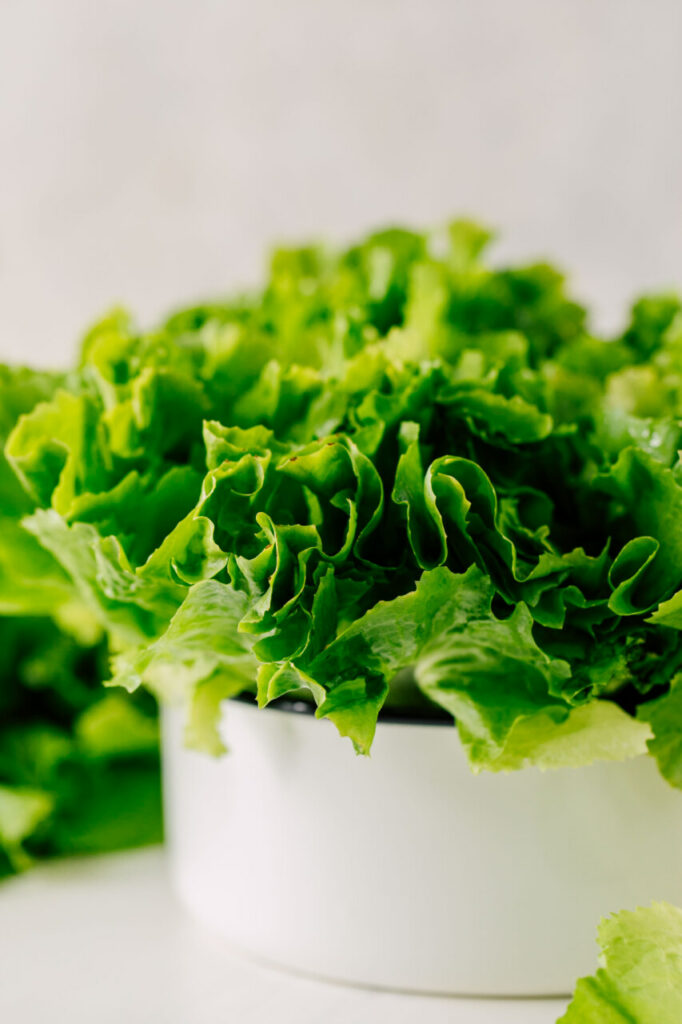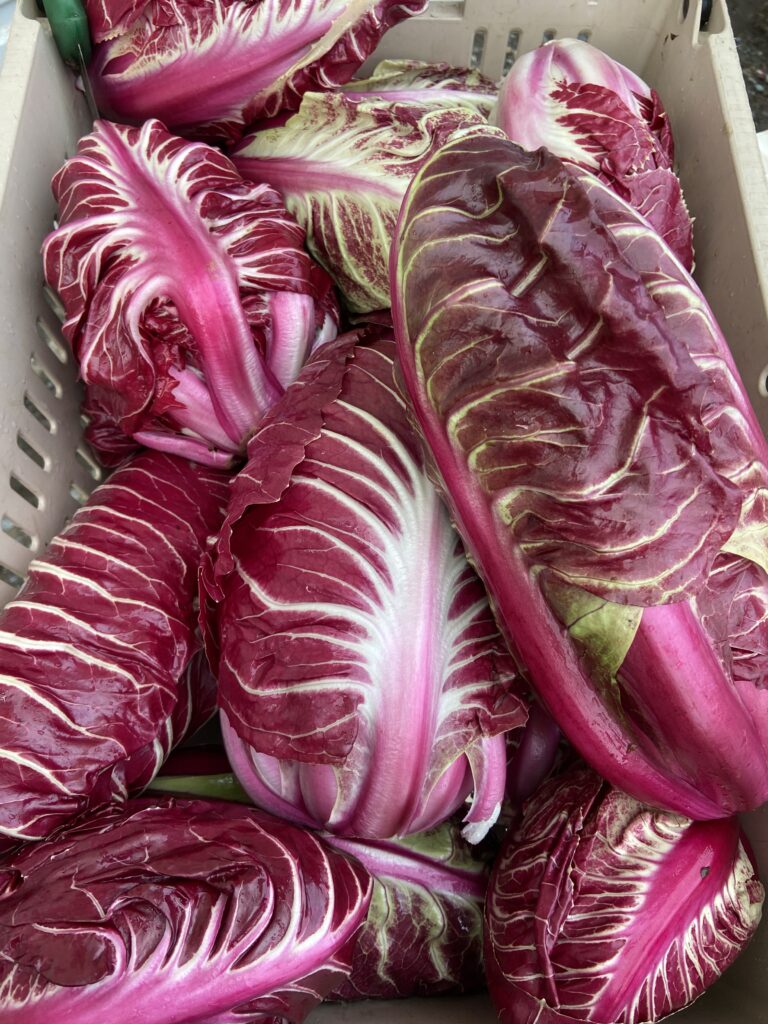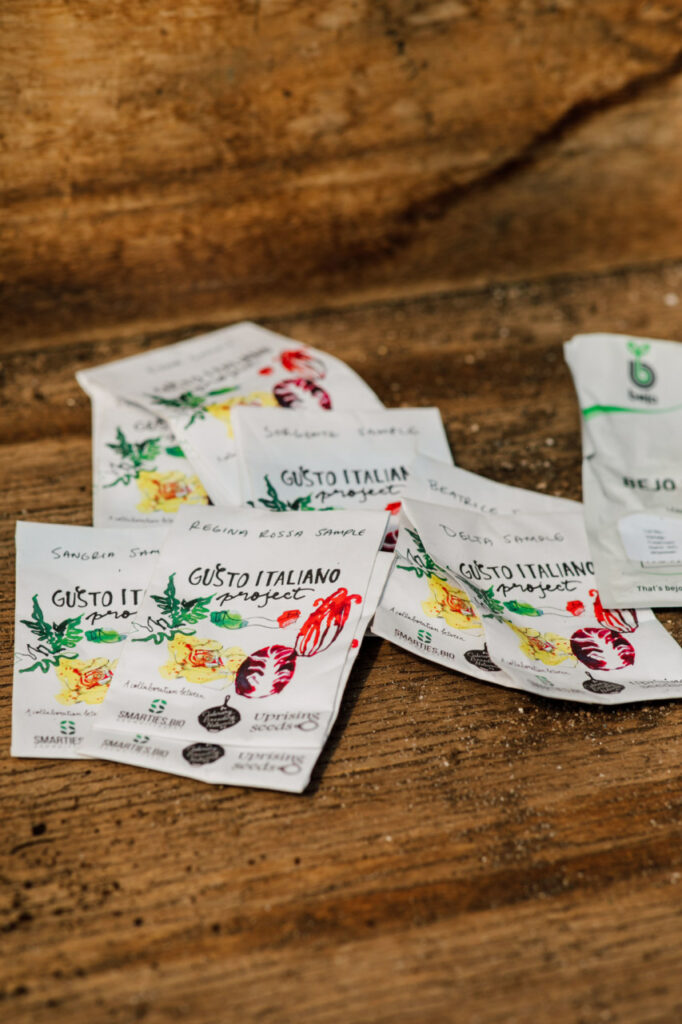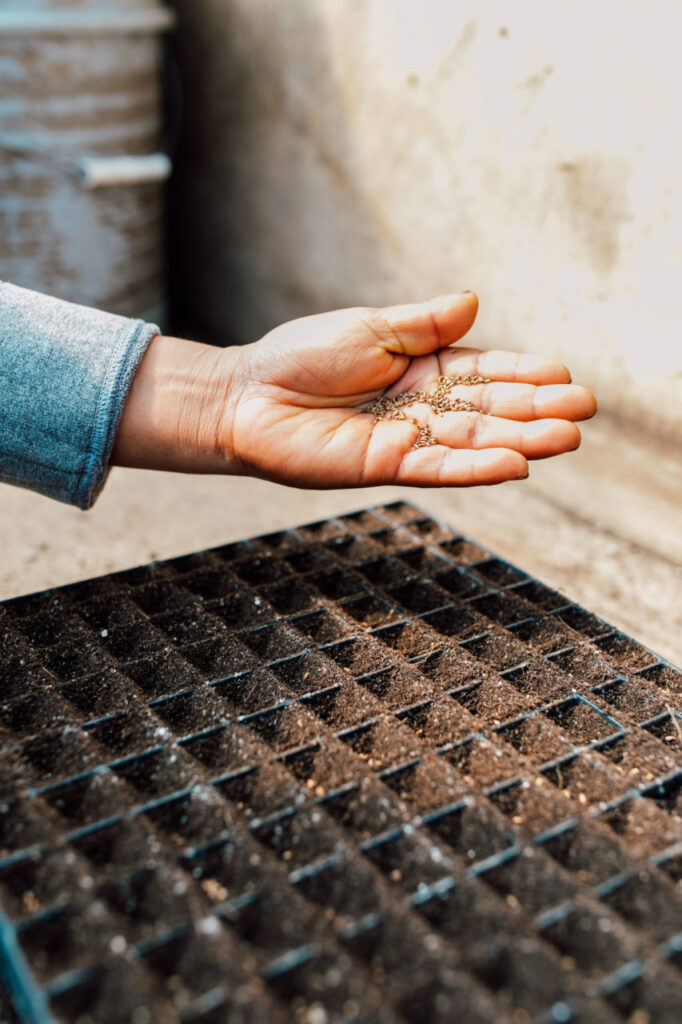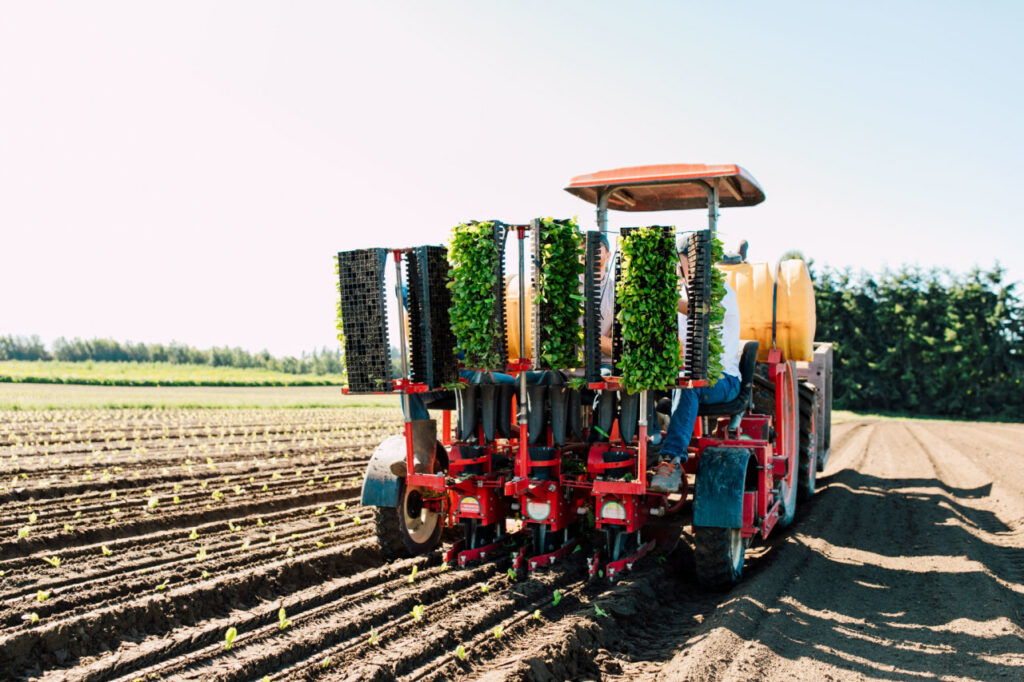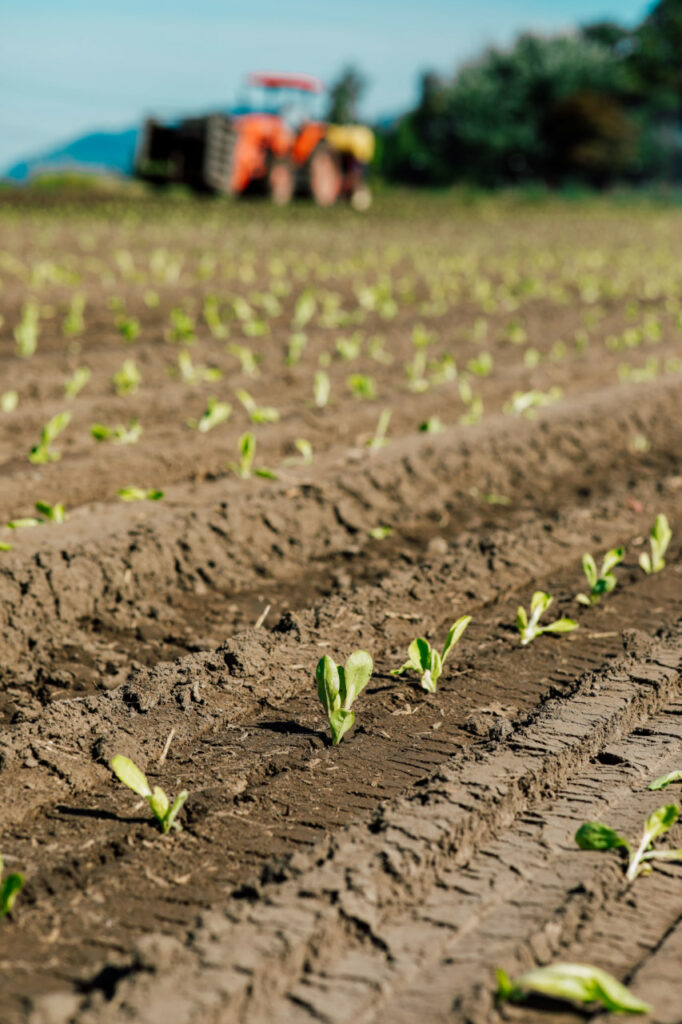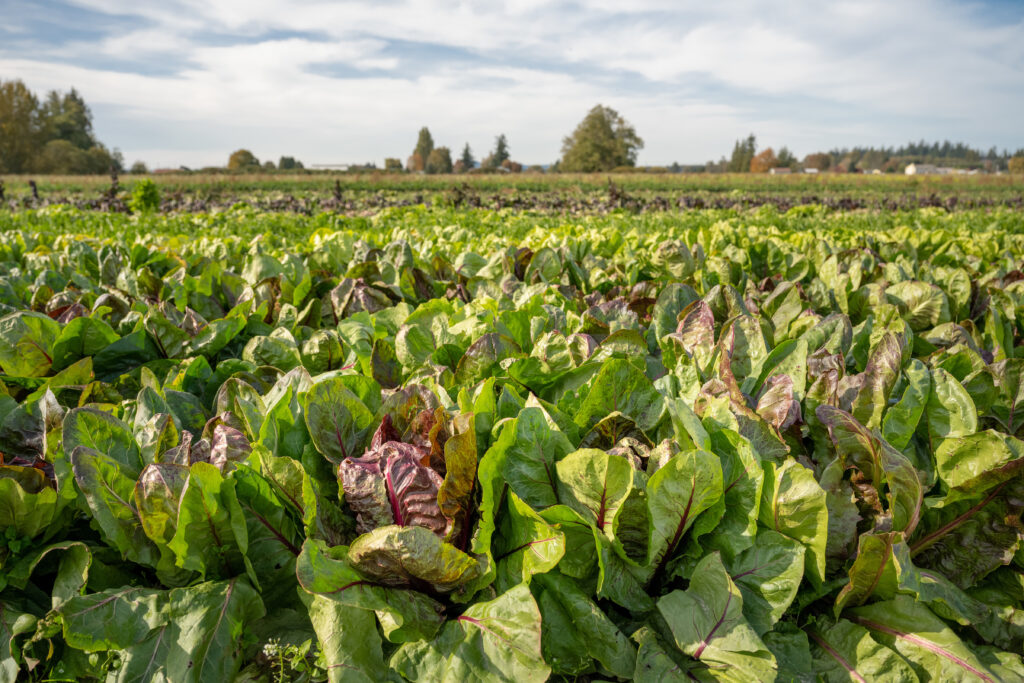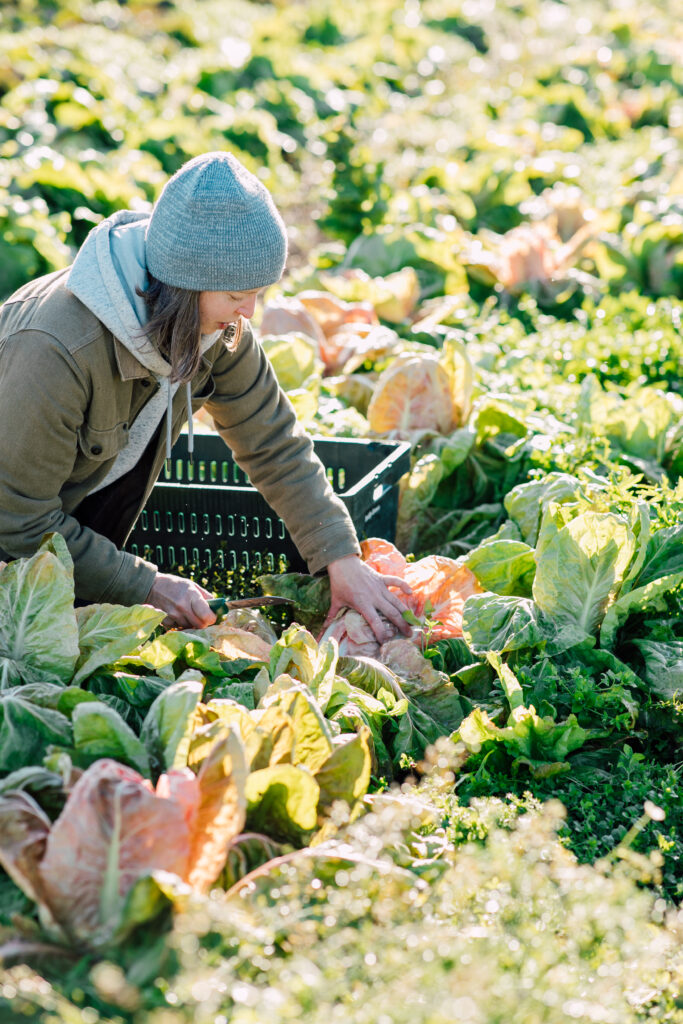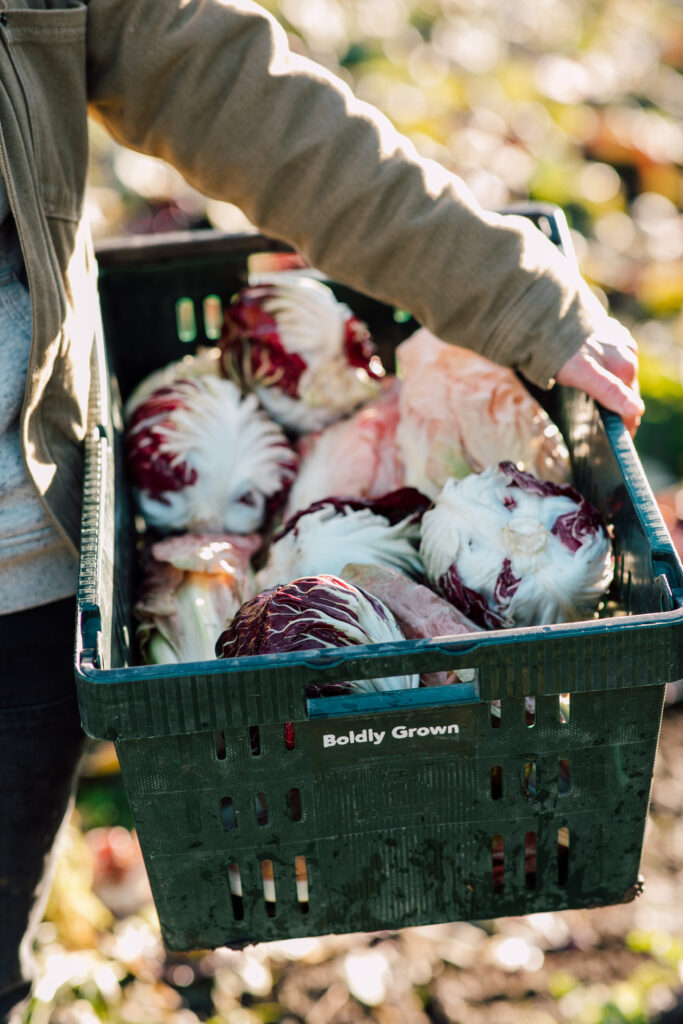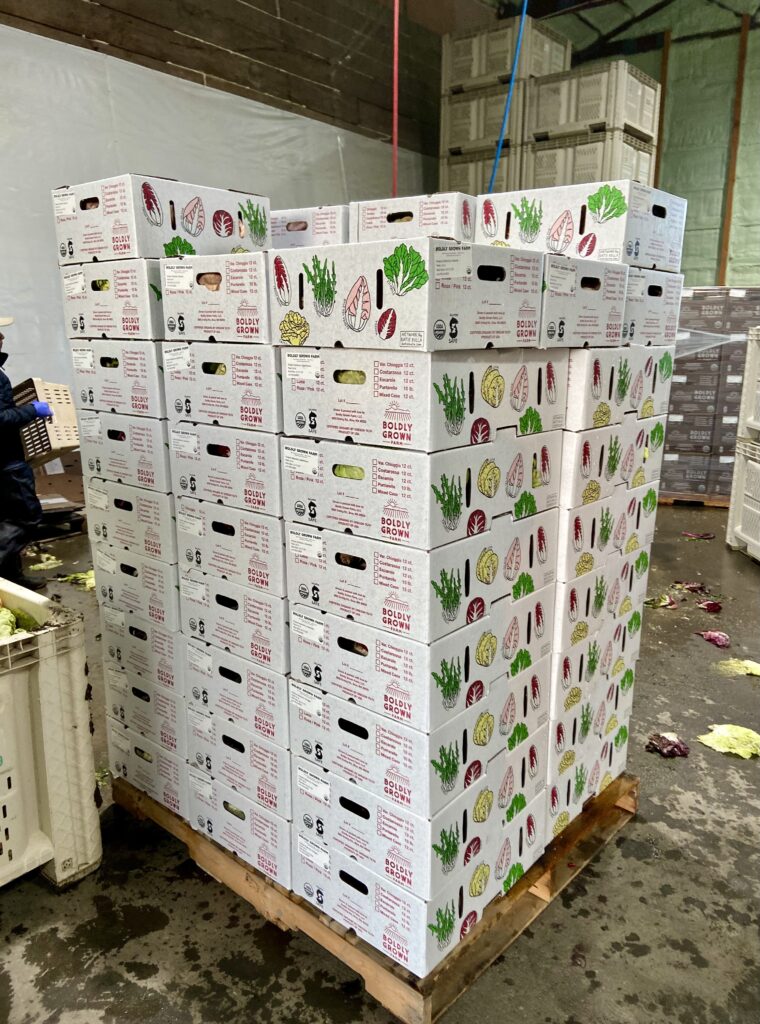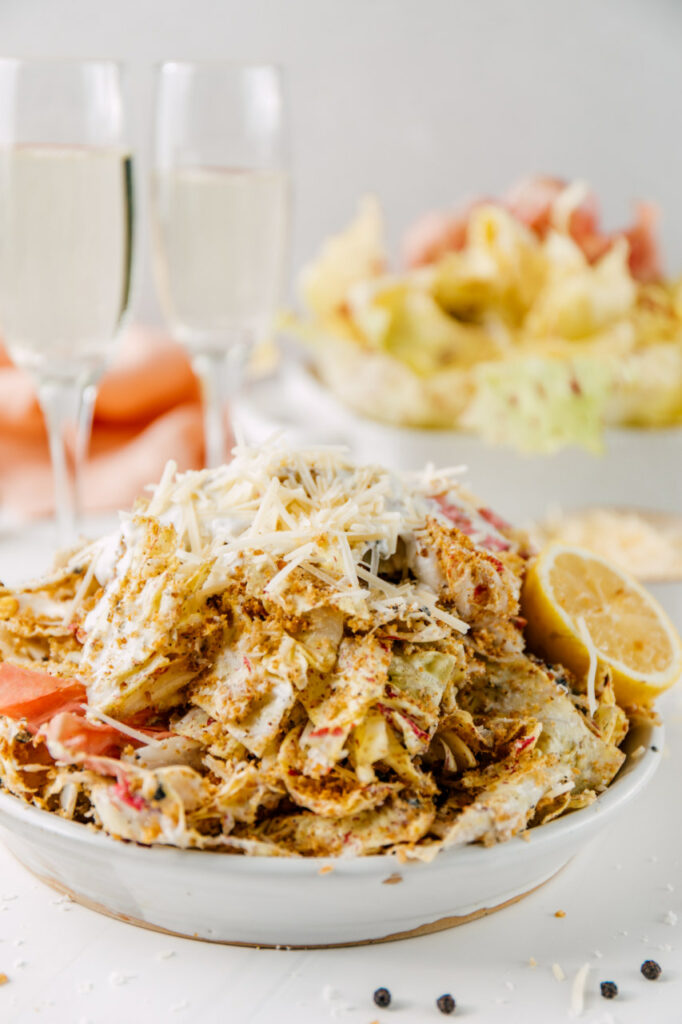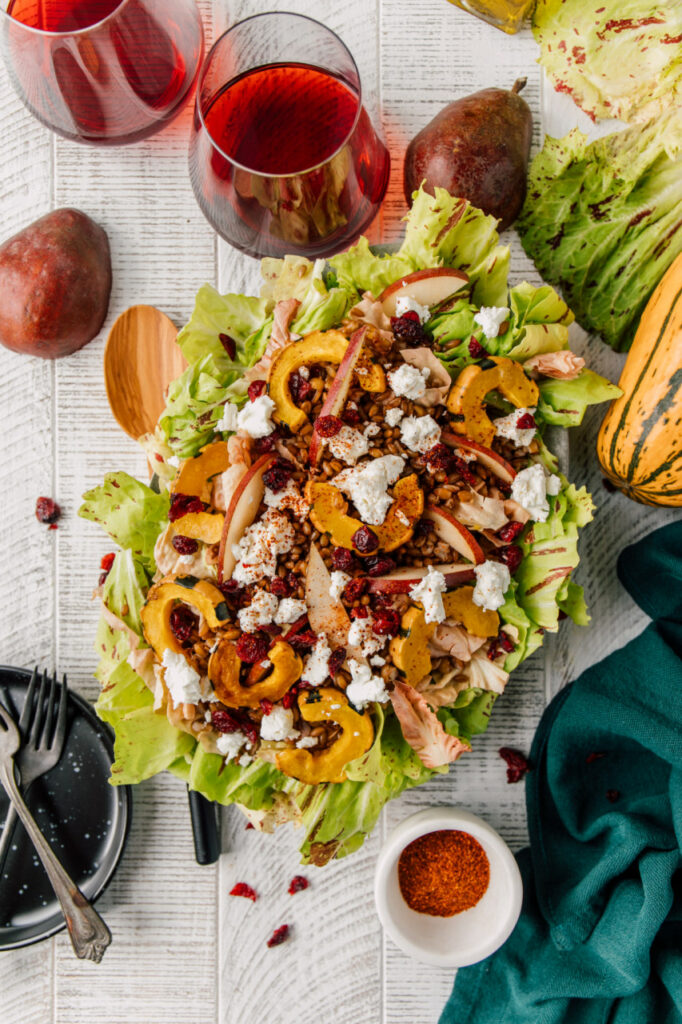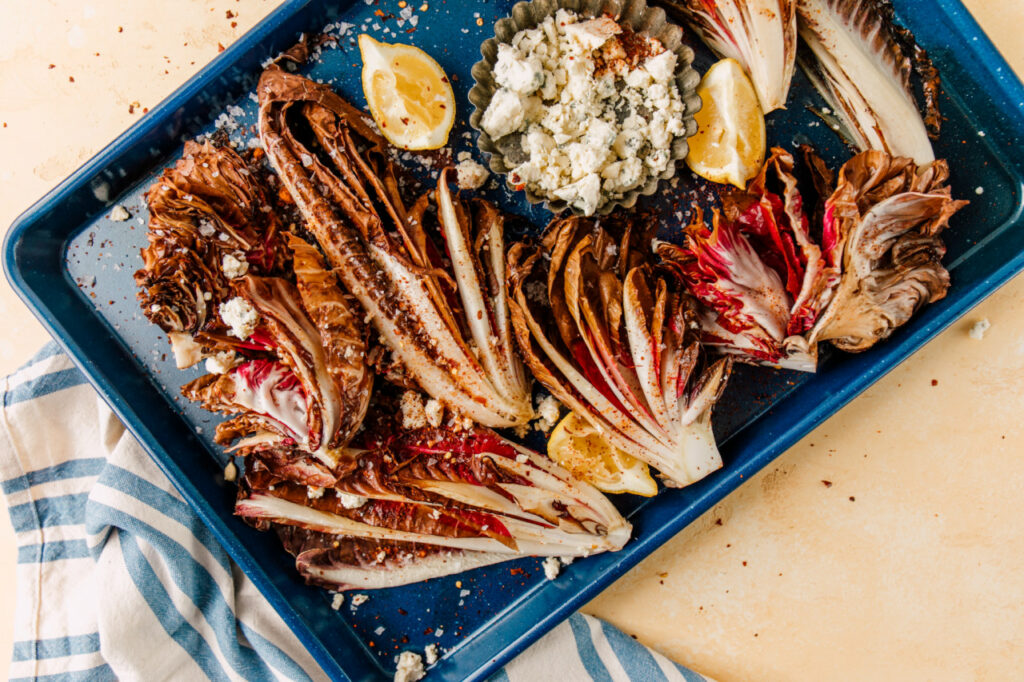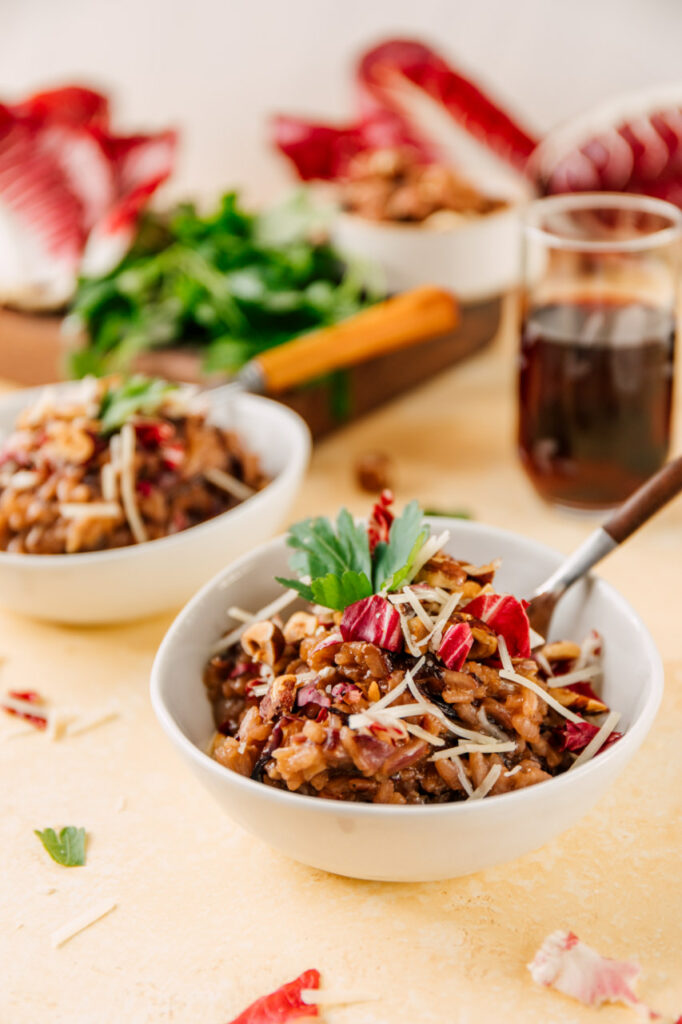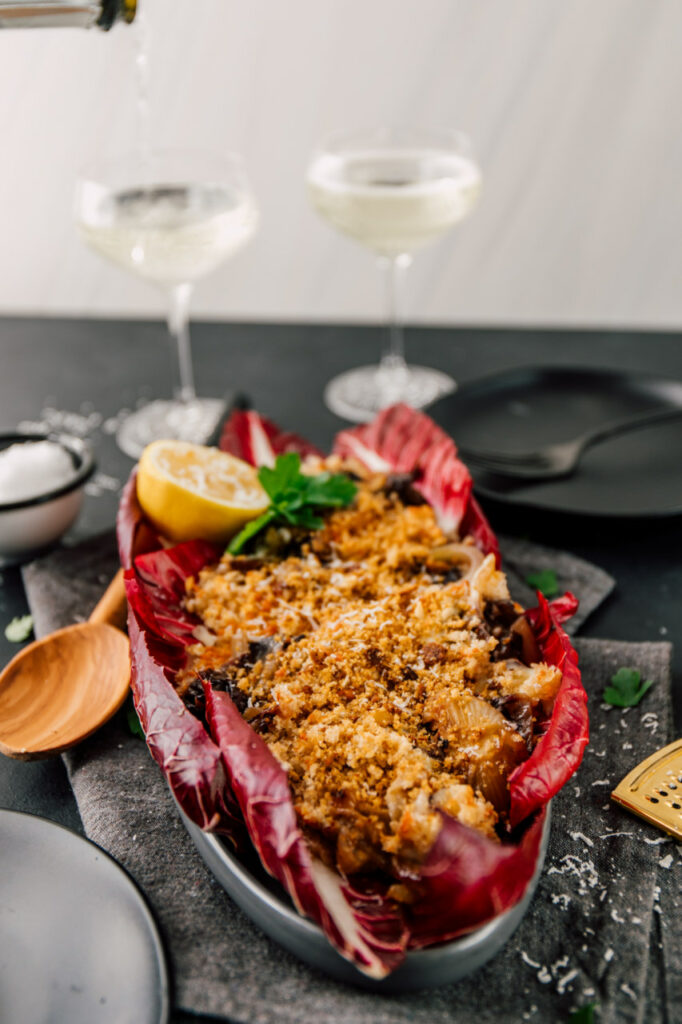Originally hailing from the Veneto region of Italy, radicchio and other chicories have been gaining in popularity in the US in recent years—a veritable “#radicchiorevolution,” as we like to say! We love growing (and eating!) this bitter Italian green for many reasons. In addition to being delicious, it’s well-suited to our mild Pacific Northwest climate—our region has been referred to as the “Veneto of North America.” Radicchio isn’t affected by many pests or diseases and is a relatively cold-hardy green—local radicchio season really hits its stride in October and can continue through early spring. It also stores well, and it’s common for farmers to harvest radicchio and store it for a month or two before selling (it can keep in your fridge for a similar length of time!). The amazing thing about radicchio is that, even if the outer leaves start to go off, you can often peel a few layers back and find a beautiful head underneath.
Radicchio’s cold tolerance and shelf life give us access to a delicious local crop you can make salads with all winter long, instead of turning to lettuce grown in Arizona or Mexico. It’s a crop that we’ve become known for, and we’re proud to be one of the primary wholesale radicchio suppliers in our region. We encourage you to give it a try and make it part of your fall & winter repertoire!
Types of Radicchio
Radicchio or chicory? One way we like to say it is that “all radicchios are chicories but not all chicories are radicchios.” We’ll refer you to the great overview by Chicory Week if you want to learn more about this distinction. There are many different types of radicchio, often named for towns in the Veneto region of Italy. The type refers to the physiological form (or phenotype) of radicchio. The types we grow are pictured below. For each type, there are a wide range of named varieties available from different breeders and seed companies that may perform better in different conditions, mature at different times or last longer in storage.
Growing Radicchio
Eating Radicchio
Most chicories can be eaten raw or cooked, but certain types lend themselves to different uses, in part based on their level of bitterness and your palate! Though in North America we tend toward sweeter greens like lettuce, there are many other bitter flavors we’ve become accustomed to (think IPA, coffee and dark chocolate!). We think you can develop a taste for the bitter flavor of radicchio, and many recipes pair it with foods like pears, apples, cranberries, honey, balsamic vinegar rich cheeses and nuts to balance out the flavors. Another trick is to chop & soak in ice water to remove some bitterness. However, we personally love it just as it is. It’s now a taste we associate with local eating in the fall and winter months!
Find our Radicchio
Our radichchio is available through our CSA, farm stand and wholesale accounts.

